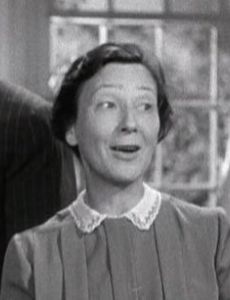
Hilda Plowright was born on November 29, 1890 in Swaffham, Norfolk, England. She was an actress, known for Summer Magic (1963), 36 Hours (1965) and Partners of the Plains(1938). She died on October 9, 1973 in San Diego, California, USA.

Hollywood Actors

Hilda Plowright was born on November 29, 1890 in Swaffham, Norfolk, England. She was an actress, known for Summer Magic (1963), 36 Hours (1965) and Partners of the Plains(1938). She died on October 9, 1973 in San Diego, California, USA.


Michelle O’Donnell’s obituary in 2005 in “The New York Times”:
John Fiedler, who played character roles in celebrated dramas on Broadway and in Hollywood but gained lasting fame among young audiences as the voice of Piglet in Walt Disney’s Winnie-the-Pooh films, died on Saturday. He was 80.
His death was confirmed by his brother, James.
Mr. Fiedler had appeared in the Broadway production of “A Raisin in the Sun” and had played a juror on film in the drama “Twelve Angry Men” when, in the 1960’s, his voice earned him the role of Piglet, the kind-hearted worrier who is Winnie-the-Pooh’s best friend.
“Walt Disney heard it on a program and said, ‘That’s Piglet,’ ” James Fiedler recalled.
John Fiedler’s natural speaking voice was higher than most men’s, his brother said, but he still had to raise it considerably to achieve the high-pitch of the little pink pig. Mr. Fiedler continued to play this part in later life, most recently this year in “Pooh’s Heffalump Movie”; last year, he did “Winnie-the-Pooh: Springtime with Roo,” and in 2003, “Piglet’s Big Movie.”
John Donald Fiedler was born Feb. 3, 1925 in Platteville, a small town in southwestern Wisconsin, and was the oldest of three children born to Donald and Margaret Fiedler. When he was 5, his father, a salesman, moved the family to Shorewood, a suburb of Milwaukee.
There, John’s love of acting bloomed, his brother said. He staged productions in the family’s garage and cast them with neighborhood children.
He graduated from Shorewood High School in 1943 and enlisted in the United States Navy, serving stateside until World War II’s end. He made his way to New York City the following year, his brother said, and joined the Neighborhood Playhouse.
In 1954, he landed the part of Medvedenko in “The Sea Gull” starring Montgomery Clift and Judith Evelyn Off Broadway at the Phoenix Theater. That was followed by the Broadway productions of “A Raisin in the Sun” with Sidney Poitier and “The Odd Couple” starring Walter Matthau and Art Carney. Many of his characters had meek demeanors that were belied by a tough, even mean streak.
He landed character parts in movies, including “True Grit” with John Wayne and “A Touch of Mink” with Cary Grant. In addition, he played parts on television series, including “Star Trek” and “The Bob Newhart Show,” in which he was Mr. Peterson, the bashful patient who was always henpecked by his wife.
Mr. Fiedler said that his brother approached the part of Piglet with as much enthusiasm as his other roles, as it was simply a chance to act.
In addition to his brother, who lives in Madison, Wis., Mr. Fiedler is survived by a sister, Mary Dean of Milwaukee, and numerous nieces and nephews.
Correction: Monday, June 27:
An obituary yesterday about John Fiedler, an actor who was the voice of Piglet in Disney’s Winnie-the-Pooh films, misstated the title of another movie in which he appeared. It was “That Touch of Mink,” not “A Touch
The above “New York Times” obituary can also be accessed online here.
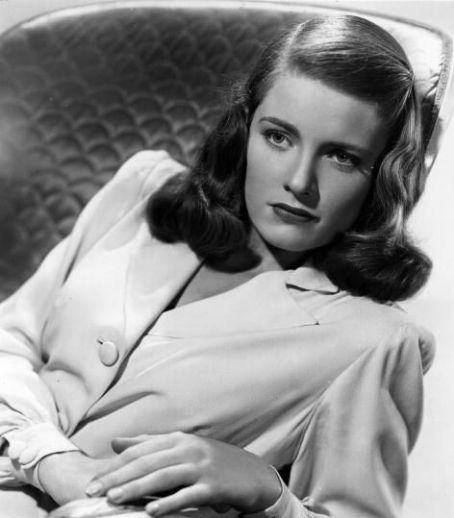
Tom Vallance’s obituary in “The Independent”:
Born in Hollywood, Los Angeles, in 1925, Guild was a student at the University of Arizona with no previous acting experience when Zanuck saw her photograph on the cover of Life magazine (part of a layout on campus fashions) and decided to sign her to a contract. After a considerable period of training and publicity, she was given a leading role in Somewhere in the Night (1946), an intriguing thriller directed and co-written by Joseph L. Mankiewicz.
It was his second film as a director, and Guild later recalled the close collaboration between the director and his editor James Clark. “Joe was smart enough to know that he didn’t know enough about editing. He had Clark on the set every day to pick his [Clark’s] brains, and he really listened.”
Somewhere in the Night was part of the film noir cycle popular at the time, its amnesiac hero journeying through the seedier parts of Los Angeles in his quest to discover his identity and his possible link with a murder. Guild played a night-club singer who aids the hero in his quest and falls in love with him. She said later that Mankiewicz had lunch with her every day throughout the shooting and drew from her every detail of her life story, which he would use when preparing her for difficult scenes. “I never would have stayed in the picture if it hadn’t been for Joe,” she said, “because he really fed me every line.”
Mankiewicz was a notorious ladies’ man who had already had affairs with the Fox girls Linda Darnell and Gene Tierney, but Guild said that although she had a “wild, mad crush on him” their relationship was platonic:
He kissed me once, but there was nothing sexual about our relationship. He treated me like an intelligent woman instead of someone who was predominantly attractive. I think maybe he required attention from a younger woman with whom he could be professorial and pedantic. He asked me out a number of times, but I said “What about your wife?”
Guild was less enthusiastic about her leading man, John Hodiak, whom she found “very cold”, and the lack of chemistry between the two leads worked to the film’s detriment.
Fox centred much of the film’s advertising around their new star: “Meet that Guild girl – she rhymes with wild!” was their slogan. Variety commented: “There’s no quarrel with her performance as a newcomer but it carbon-copies too many other film lookers to stand out individually.”
Guild was next cast in John Brahm’s The Brasher Doubloon (1947), an underrated adaptation of Raymond Chandler’s thriller The High Window. It had the misfortune to be released after two superb Chandler adaptations, Edward Dmytryk’s Farewell My Lovely (1944) with Dick Powell and Claire Trevor, and Howard Hawks’s The Big Sleep (1946) with Bogart and Bacall, and the two leads, Guild and George Montgomery, were considered a bland couple in comparison. Though Montgomery was too boyish as the private detective Philip Marlowe, Guild was effective as the strangely neurotic secretary to a wealthy widow (Florence Bates) who hires Marlowe to find a missing gold coin.
The Brasher Doubloon was a taut, atmospheric thriller with typically low-key noir photography, some fine supporting performances, notably those of Bates and Fritz Kortner, and a gripping plot, but its modest reception tempered the studio’s enthusiasm for their new discovery. After casting her as the girlfriend of an ex-vaudevillian’s son (Dan Dailey) in the nostalgic Give My Regards to Broadway (1948), Fox terminated Guild’s contract.
At United Artists, she played Marie Antoinette in Gregory Ratoff’s Black Magic (1949), dominated by Orson Welles’s grandiloquent performance as the 18th-century villain Cagliostro, and, after three inconsequential roles at Universal, in Abbott and Costello Meet the Invisible Man (1951), Little Egypt (1951) and Francis Covers the Big Town (1953), she retired from the screen.
In the mid-Forties she had been briefly married to the actor Charles Russell, by whom she had a daughter, and in 1950 she married the Broadway producer Ernest Martin (who co-produced Guys and Dolls, Can Can and Cabaret), a union that lasted for 25 years. The couple had a luxurious apartment in New York and a house in the South of France, and, when not travelling or gardening, Guild served on the Board of the Memorial Sloan Kettering Cancer Centre and worked with patients there. She and Martin, who had two daughters, were divorced in 1975, and Guild married John Bryson, a photojournalist, in 1978. They divorced in 1995.
Guild made a brief Hollywood comeback in 1971 when Otto Preminger, whom she had known since her Fox days, asked her to do a cameo as a magazine editor in his witty black comedy Such Good Friends, and shortly afterwards when her marriage to Martin was breaking up she expressed the hope, sadly unrealised, to reactivate her career, telling an interviewer:
I want to go back to work, and it’s really quite remarkable because when I worked before, the only thing I liked about my work was lunch. Now I love the camaraderie of just working. If I could do something other than acting I would. But acting is the only thing I ever made any money at, so I’m trying that first. And you know something? Now that I’m older, I like acting.
Nancy Guild, actress: born Hollywood, California 11 October 1925; married Charles Russell (one daughter; marriage dissolved), 1950 Ernest Martin (two daughters; marriage dissolved 1975), 1978 John Bryson (marriage dissolved 1995); died East Hampton, New York 24 August 1999.
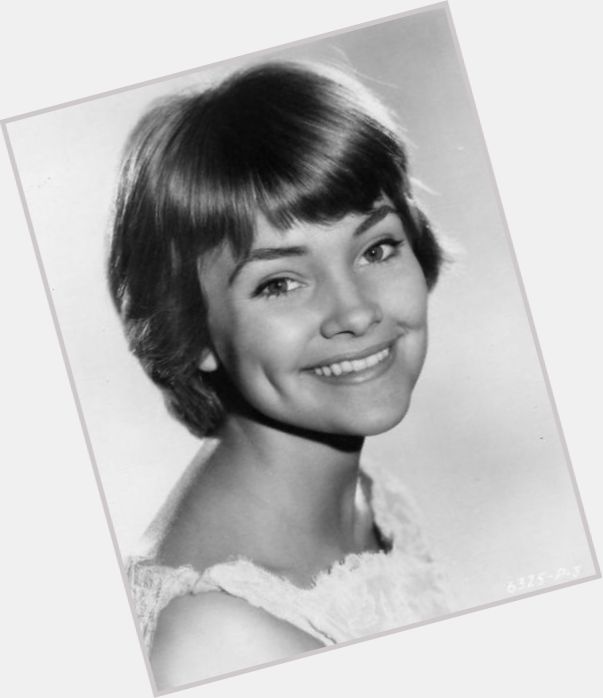
“Wikipedia” entry:
Lauri Peters (born Patricia Peterson, July 2, 1943) is an American actress, dancer, singer, drama teacher and author.
Peters created the role of Liesl Von Trapp in the original 1959 Broadway production of The Sound of Music. She received a Tony Award nomination for Best Supporting or Featured Actress in a Musical, which she shared with her sibling castmates. She was married to actor Jon Voight (1962–67), whom she met when he joined the cast as Nazi messenger boy Rolfe, with whom Liesl has a song (“Sixteen Going on Seventeen”) and a mutual attraction. She can be heard on the show’s cast album, which has sold more than three million copies in the U.S.
Her film roles found her romantically involved with teen idol singers Fabian and Cliff Richard, and acting alongside James Stewart andSidney Poitier.
She also appeared as Moll in the Howard Da Silva directed revival of Marc Blitztein‘s The Cradle Will Rock. She appeared on popular television shows of the 1960s and ’70s, including Gunsmoke, but worked primarily in the theater, on Broadway and off, and in touring companies.
With noted acting teacher Sanford Meisner, Peters founded the Meisner Extension at NYU in 1993, where she was Artistic Director and Master Teacher. Teaching the technique away from Manhattan, she has written a book on Meisner.
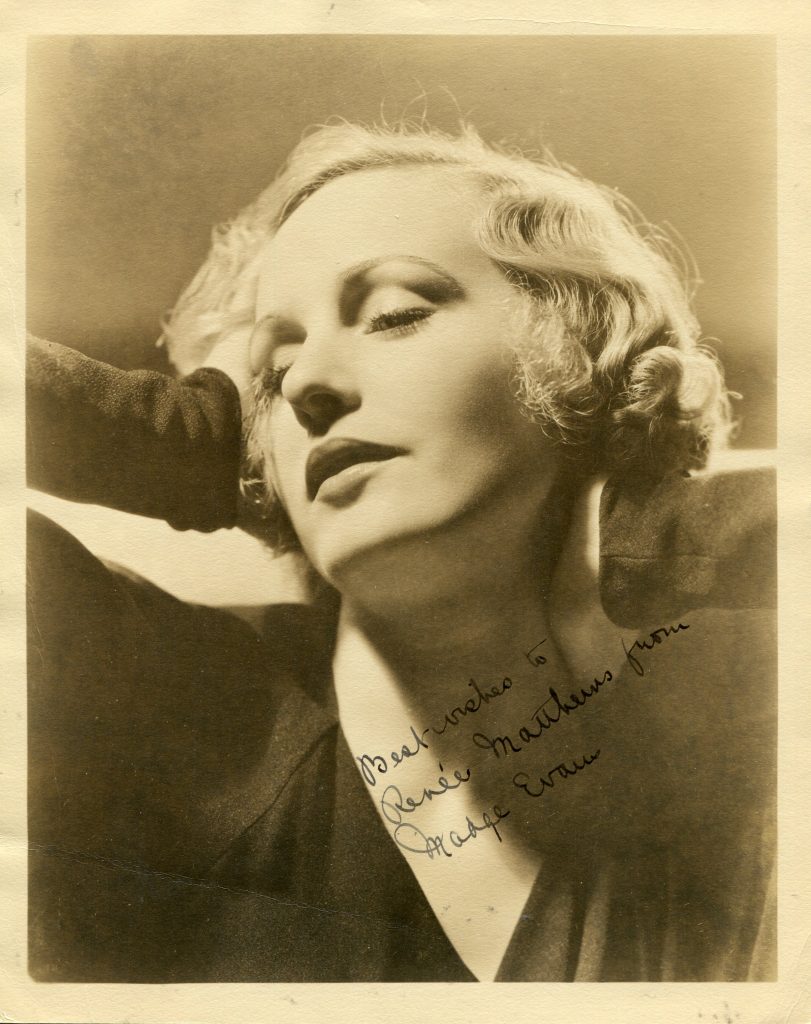

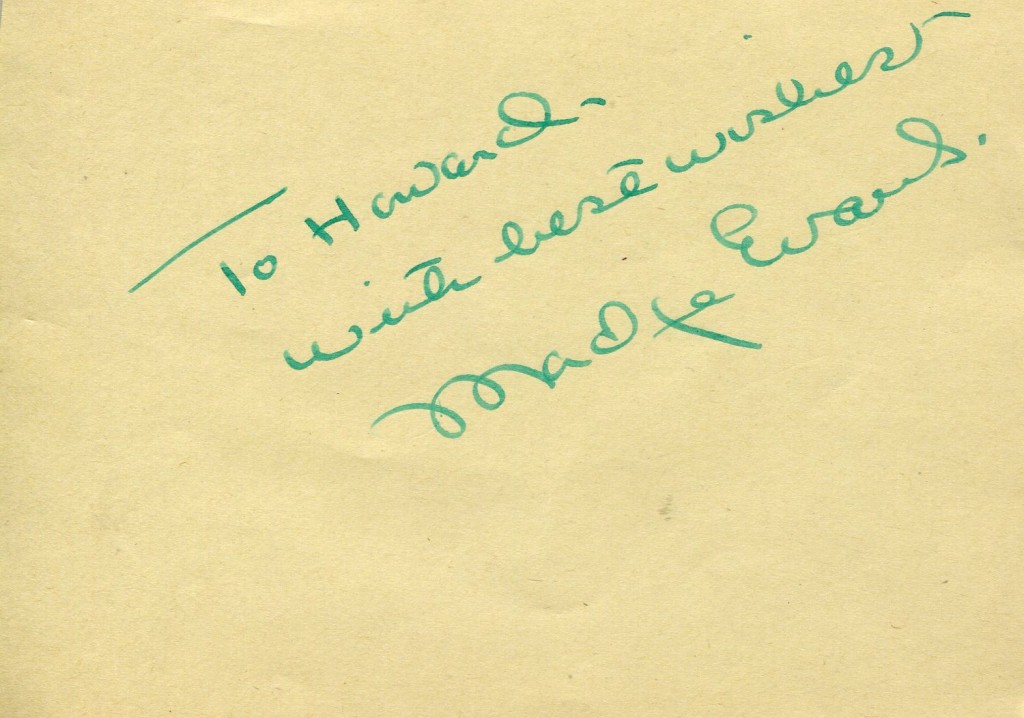
IMDB entry:
Lovely Madge Evans was the perennial nice girl in films of the 1930’s. By then, she had been in front of the camera for many years, starting with Fairy Soap commercials at the age of two (she sat on a bar of soap holding a bunch of violets with the tag line reading “have you a little fairy in your home?”). ‘Baby Madge’ also lent her name to a children’s hat company. In 1914, aged five, she was picked out by talent scouts to appear in theWilliam Farnum movie The Sign of the Cross (1914), followed by The Seven Sisters(1915) with Marguerite Clark.
By the end of the following year, she had amassed some twenty film credits, appearing with such noted contemporary stars as Pauline Frederick or Alice Brady. All of her early films were made on the East Coast, at studios in Ft.Lee, New Jersey. In 1917 (aged eight), Madge made her Broadway debut in ‘Peter Ibbetson’ with John Barrymore andLionel Barrymore. She resumed her stage career in 1926 as an ingenue with ‘Daisy Mayme’ and the following year appeared with Billie Burke in Noel Coward‘s costume drama ‘The Marquise’ (1927).
Her pleasing looks and personality soon attracted the attention of Hollywood and she was eventually signed by MGM in 1931. During the next decade, she appeared in several A-grade productions, notably as Lionel Barrymore’s daughter in MGM’s Dinner at Eight(1933) and as the dependable Agnes Wickfield in one of the best-ever filmed versions ofDavid Copperfield (1935). She co-starred opposite James Cagney in the gangster movieThe Mayor of Hell (1933), Spencer Tracy in The Show-Off (1934) and listened to Bing Crosby crooning the title song in Pennies from Heaven (1936). Madge received praise for her performance as the star of Beauty for Sale (1933) and The New York Times review of January 13 1934 described her acting in Fugitive Lovers (1934) (opposite Robert Montgomery ) as ‘spontaneous and captivating’. Many of her ‘typical American girl’ roles did not allow her to express aspects of the greater acting range she undoubtedly possessed. Too often she was cast as the ‘nice girl’ – and those rarely make much of a dramatic impact. On the few occasions she was assigned the role of ‘other woman’ , such as the Helen Hayes-starrer What Every Woman Knows (1934), audiences found her character difficult to believe and disassociate from her all-round wholesome image. When her contract with MGM expired in 1937, Madge wound down her film career and, following her 1939 marriage, concentrated on being the wife of celebrated playwright Sidney Kingsley. She last appeared on stage in one of his plays, “The Patriots”, in 1943.
– IMDb Mini Biography By: I.S.Mowis
The above IMDB entry can also be accessed online here.
“New York Times” obituary from 1982:
Madge Evans, a popular actress who frequently portrayed the cleancut, decent American woman in films and on stage during the 30’s, died of cancer Sunday night at her home in Oakland, N.J., where she had lived for many years with her husband, the playwright Sidney Kingsley. She was 71 years old.
Miss Evans appeared in such films as ”The Greeks Had a Word for Them” (1932), ”Dinner at Eight” (1933), ”Stand Up and Cheer” (1934), ”David Copperfield” (1935) and ”Pennies from Heaven” (1936).
On Broadway, she played in ”Daisy Mayme” (1926), ”Our Betters” (1928), ”Philip Goes Forth” (1931), ”Here Come the Clowns” (1938) and ”The Patriots” (1943), which was written by Mr. Kingsley.
The actress was born on the West Side of Manhattan on July 1, 1909, and first appeared professionally in an advertisement, as a child model perched on a huge bar of Fairy Soap.
While modeling, she was spotted as a potential child star. At the age of 5, she appeared in a silent-film version of ”The Sign of the Cross” with William Farnum. By 6, she had acted in 20 films made in studios in Fort Lee, N.J.
At 15, Miss Evans was seen in ”Classmates,” a film with Richard Barthelmess. In 1926, she made her first stage appearance in ”Daisy Mayme” and thereafter her career alternated between films and Broadway. The handsome young actress appeared in films with such stars as Spencer Tracy, Bing Crosby, Warner Baxter, John and Lionel Barrymore, James Cagney, Al Jolson, Robert Young, Lee Tracy, Richard Dix and Robert Montgomery.
While in ”Brief Moment” at the Ogunquit Playhouse in 1939, the 30-year-old actress was married to Mr. Kingsley. Thereafter, Mr. Kingsley said recently, she devoted much of her time to helping him with the research and writing of his plays. He described her as his collaborator in the theater in every sense.
The above “New York Times” obituary can also be accessed online here.


Tom Vallance’s “Independent” obituary:
Born Lewis Frederick Ayre in 1908, in Minneapolis, Minnesota, he studied medicine at the University of Arizona but was more interested in music, playing banjo in the college orchestra. While playing with a dance band at Cocoanut Grove in Hollywood, he was spotted by the talent scout Paul Bern and after a minor role in The Sophomore (1929) was signed by MGM to play opposite Garbo in her last silent film, The Kiss (1929).
Lewis Milestone, about to direct All Quiet on the Western Front at Universal, had decided to cast Douglas Fairbanks Jnr in the lead, though Bern suggested Ayres for the role. The film’s dialogue director, George Cukor, shot a test of Ayres (along with other hopefuls) and Milestone saw it on the day that United Artists (who had Fairbanks under contract) informed him that they would not loan their star. Ayres later stated, “Milestone told me time and time again that if I had made the tests earlier I probably never would have been chosen.”
As one of a bunch of schoolboys persuaded by their jingoistic master to enlist in the war, only to become disillusioned as they are decimated in futile military action, Ayres perfectly captured the pain and resignation of innocence betrayed. Asked while on leave to lecture to a group of young students about the glories of war, he makes a tentative start then angrily tells them, “When it comes to dying for your country, it is better not to die at all!”, provoking hisses and boos. Equally memorable is the famous ending, where a sniper’s bullet ends the boy’s life as he reaches from his trench for a butterfly.
Signed to a contract by Universal, Ayres was loaned to Warners to play a feared gangster boss in Doorway to Hell (1930), a monumental piece of miscasting. (James Cagney’s presence in the cast, as one of Ayres’s henchmen, only made the boyishly innocent Ayres look more incongruous.) He made over 20 films, mostly routine fare that slowly eroded his reputation, over the next few years, and in 1936 tried directing with Hearts in Bondage, which was not a success. Now starring in B-movies, he told a reporter, “Hollywood, quick to acclaim, soon washed its hands of me – and the snubs you get sliding down aren’t nearly as pleasant as the smiles going up.”
He was given his first good role in years when George Cukor offered him the part of Katharine Hepburn’s brother in Holiday (1938), a beautiful screen adaptation of Philip Barry’s play and one of the finest of Thirties comedy-dramas. Ayres, who confessed to having “coasted” through many of his previous roles, made his role as a young alcoholic socialite wistfully endearing, though the film belonged to its stars Hepburn and Cary Grant.
The same year MGM cast Ayres in the title-role of a B- picture, Young Doctor Kildare, as an intern working under the guidance and watchful eye of elderly Dr Gillespie (Lionel Barrymore). A great hit, the film started a series, and Ayres was working on his 10th when he was drafted to serve in the Second World War and he refused combat duty on religious grounds.
His career seemed over. Louis B. Mayer fired him and re-shot his scenes with Philip Dorn. Exhibitors refused to book films in which he appeared, pickets appeared outside cinemas that tried to show the Kildare films, and Variety called him “a disgrace to the industry”.
After working in a labour camp, Ayres volunteered for non-combatant duties and served on the battlefront as a medic and chaplain’s aide. Though he had decided to retire from movies, he changed his mind while overseas. “I realised how important movies are to the lives of so many people,” he said.
Restored to favour, he starred opposite Olivia De Havilland in Robert Siodmak’s The Dark Mirror (1946), but later confessed dissatisfaction with his work. “As a psychiatrist investigating twin sisters, one of whom is a murderer, I played it too lightly. My character should have struggled and sweated more. I did too much smiling.”
In Vincent Sherman’s The Unfaithful (1947), a splendid melodrama that effectively reworked Maugham’s The Letter to deal with the subject of wartime infidelity, he was a lawyer who defends Ann Sheridan on a charge of murder and also tries to salvage her marriage to a returning soldier, Zachary Scott.
His next film, Johnny Belinda (1948), won him a Best Actor Oscar nomination for his sincere portrayal of a doctor who teaches a deaf and dumb Jane Wyman how to communicate, though Ayres was not happy with Jean Negulesco as director. “He was artistic and very extroverted, but none of us felt he was on target with the characterisations, so the actors became their own directors. Jane, Charles Bickford, Agnes Moorehead and myself respected each other’s opinions, so after Jane and I did a scene we’d look at Charles and Agnes. If they nodded, we would proceed: if they shook their heads, we’d do the scene again.”
With roles once again becoming scarce, he embarked on a world tour in 1954 to compile a documentary, Altars of the East, which he wrote, produced, narrated and financed. A probing of the frontiers of faith, it started a decade’s study of comparative religion (“the most meaningful thing I have ever done”) and production of several documentaries on the world’s religions. In 1957 he was appointed by the Secretary of State, John Foster Dulles, to serve a three-year term on the US National Committee for Unesco.
Returning to acting as a character player, he was a frequent performer in television plays and movies, plus occasional big-screen roles, among them Advise and Consent (1962), Battle for the Planet of the Apes (1973) and Damien – Omen II (1978). “I still act occasionally,” he said recently, “but I’m in my eighties and have never had my face lifted, so there aren’t a lot of roles.”
Two early marriages were unsuccessful – to Lola Lane (1931-33) and Ginger Rogers (1933-40) – but in 1964 he married an Englishwoman, Diana Hall, and the day before his 60th birthday she gave birth to their son, Justin.
“If I were young again,” Ayres said, “I don’t think I’d be an actor. I’ve met some wonderful people, and it made many things possible for me, but if I had it all to do over again, my field would be philosophy.”
Lewis Frederick Ayre (Lew Ayres), actor: born Minneapolis, Minnesota 28 December 1908; married 1931 Lola Lane (marriage dissolved 1933), 1933 Ginger Rogers (marriage dissolved 1940), 1964 Diana Hall (one son); died Los Angeles 30 December 1996.
The “Independent” obituary above can also be accessed online here.
TCM overview:
This earnest, boyishly handsome star of the pacifist classic “All Quiet on the Western Front” (1930) was extremely prolific during the 1930s, at first primarily at Universal Studios, and then also at Fox and Paramount. Although a very talented and sensitive actor, Ayres found his early stardom fade during the decade as he was cast in either trivial light comedies which suited his gentle manner or in films which called for tough, streetwise characterizations which didn’t always suit him. He gave an excellent performance, though, as Katharine Hepburn’s drunken brother in George Cukor’s “Holiday” (1938) and enjoyed considerable popularity in a series of Dr. Kildare films at MGM in the late 30s and early 40s. His career faded during WWII after he declared himself a conscientious objector, but he received renewed respect when he served bravely in a non-combat medical capacity.
After the war Ayres was able to resume his career–and his sometimes typecasting as doctors–in such films as “The Dark Mirror” (1946) and “Johnny Belinda” (1948), for which he received a Best Actor Oscar nomination, though he did little acting in film after the mid-50s. He did, however, do notable work as the vice president in “Advise and Consent” (1962) and as a sympathetic resident of the vampire-ridden TV-miniseries town of “Salem’s Lot” (1979). A student of comparative theology, Ayres later produced the religious documentaries “Altars of the East” (1955) and “Altars of the World” (1976), also serving as director of the latter.
The above TCM overview can also be accessed online here.































Anthony Zerbe was born in 1936 in Long Beach, California. A popular character actor, he frst came to attention in 1969 in “The Molly McGuires” with Sean Connery and Richard Harris. He has made many movies including “The Life and Times of Judge Roy Bean” and “The Laughing Policeman”.
TCM overview:
For over four decades, Emmy-winning actor Anthony Zerbe compiled an impressive list of character turns, frequently on the amoral side, in countless features, including “Cool Hand Luke” (1967), “The Omega Man” (1971), “The Dead Zone” (1983), “License to Kill” (1989) and “The Matrix Revolutions” (2003). Classically trained, he imbued a sinuous grace and elegance to nearly every role, no matter how scurrilous or ham-fisted, which elevated him to favored actor status in the late 1970s and throughout the 1980s. Though a frequent go-to for heels and unsavory types, he could also be a warm and caring paternal figure, as evidenced by his veteran cowpoke on “The Young Riders” (ABC, 1988-1992) and numerous other television programs. Rarely off the screen for more than a few months at a time, Zerbe also maintained a busy theater schedule, which included recitations of classic poetry and the works of e.e. cummings, as well as a traveling master class in acting. His innate believability in any role, no matter how fatuous the feature or TV episode, earned him the affection of two generations of character actor aficionados.
Born Anthony Jared Zerbe in Long Beach, CA on May 20, 1936, he was the son of Arthur Lee Van Zerbe and his wife, Catherine. After graduating from Newport Harbor High School, he attended his parents’ alma mater, Pomona College, before serving in the Air Force from 1958 to 1961. Zerbe decided to become an actor after seeing Paul Newman and Joanne Woodward in the Broadway production of “Picnic,” and after his discharge from the service, headed east to study with the famed Stella Adler. In 1963, Zerbe made his screen debut during the final season of ABC’s police drama “The Naked City” (1958-1963), and soon found regular work as a guest star on various television series. He made his screen debut as the sycophantic prison trustee named Dog Boy in Stuart Rosenberg’s “Cool Hand Luke” (1967), and followed it by playing a friend of aging cowpoke Charlton Heston in Tom Gries’ revisionist Western “Will Penny” (1967). Zerbe’s ability to play both sides of the moral fence with conviction earmarked him as a character actor with exceptional versatility, though in the ensuing years, his saturnine features and uneasy smile, which frequently curled into a half-snarl, earmarked him as a prime candidate for villains of all stripes.
The 1970s was an exceptionally fecund period for Zerbe’s career, with literally dozens of film and television credits to his name throughout the decade. He landed one of his most memorable turns as the news anchor-turned-leader of an albino cult of apocalypse survivors in the cult science fiction favorite “The Omega Man” (1971), which reunited him with Charlton Heston. He later provided one of the most indelible moments in Franklin Schaffner’s “Papillon” (1973) as Toussaint, the leper bandit chief who aided Steve McQueen in his escape from Devil’s Island, and provided capable support and menace to such established stars as Paul Newman, whom he assaulted in John Huston’s “The Life and Times of Judge Roy Bean” (1972); Walter Matthau and Bruce Dern in “The Laughing Policeman” (1973); Warren Beatty in Alan J. Pakula’s “The Parallax View” (1974); John Wayne, who pursued Zerbe’s nitroglycerine-toting bandit in “Rooster Cogburn” (1975); and Robert Mitchum as Philip Marlowe in “Farewell, My Lovely” (1975). A year later, he won an Emmy Award for Best Supporting Actor in a Drama Series for “Harry O” (ABC, 1974-76) as Lt. K.C. Trench, foil and occasional ally to laconic private eye David Janssen.
The late 1970s and early 1980s saw Zerbe appear more frequently on television in major TV-movies and miniseries like “Centennial” (NBC, 1978-79) as con man-turned-land baron Mervin Wendell, and “Attica” (ABC, 1980) as defense attorney William Kunstler. The period was also marked by one of Zerbe’s more unusual titles: “KISS Meets the Phantom of the Park” (NBC, 1978), a campy fantasy produced by cartoon kings Hanna-Barbera that pitted the rock band against Zerbe’s deranged amusement park engineer. More miniseries followed, with Zerbe tackling such figures as Pontius Pilate in “A.D.” (NBC, 1985) and Ulysses S. Grant in “North and South, Book II” (ABC, 1986). Memorable features were fewer and far between, with the exception of David Cronenberg’s “The Dead Zone” (1983), with Zerbe as a wealthy patron of deranged Senate candidate Martin Sheen, as well as the James Bond feature “License to Kill” (1989) in which he portrayed a drug lord’s henchman who meets an unpleasant fate in a decompression chamber.
In 1989, Zerbe earned a plum role as the crusty leader of a group of youthful Pony Express riders on the weekly Western series “Young Riders.” Though critically reviled, the series was a particular favorite among teen audiences. From there, he maintained a steady diet of TV appearances and the occasional feature, most notably “Star Trek: Insurrection” (1998) as an imperialistic Starfleet admiral bent on relocating an alien race from their home planet, and as the governor of California in Clint Eastwood’s “True Crime” (1999). In 2003, a production of “Behind the Broken Words,” his long-running stage tribute to classic poetry alongside fellow character actor Roscoe Lee Browne, was captured on film.
That same year, Zerbe enjoyed a recurring role as the philosophical Councilor Hamann in the second and third films in the “Matrix” trilogy, “The Matrix Reloaded” (2003) and “The Matrix Revolutions” (2003). His onscreen output slowed in the years that followed as he refocused his energy on a pair of touring stage productions: “It’s All Done with Mirrors,” which saw him tackle the poetry of e.e. cummings, and “Three Days of Theatre,” an intensive workshop and lecture for master class actors in training. Both received exceptional acclaim during his frequent jaunts across the country to various colleges and theater companies
The above TCM overview can also be accessed online here.
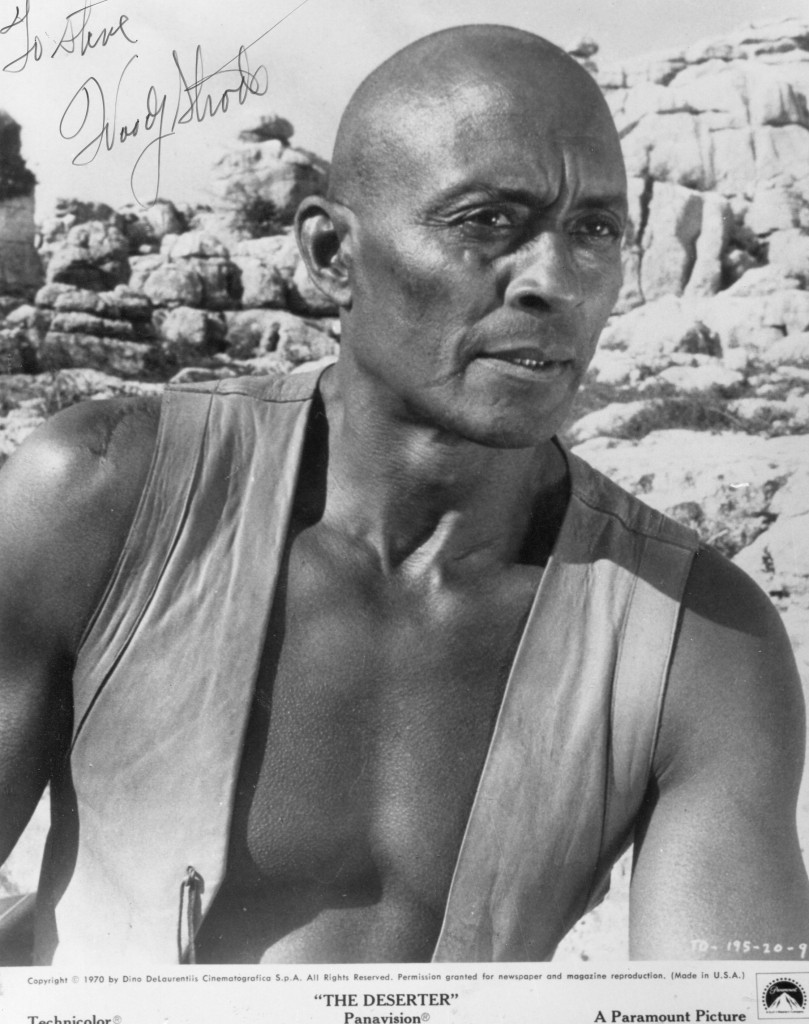
Woody Strode was born in 1914 in Los Angeles. He wasan outstanding athlete before his entry into movies. He is best known for his performance opposite Kirk Douglas in “Spartacus” and in the title role in 1960 in John Ford’s “Sgt Rutledge”. His other films include “City Beneath the Sea” in 1953, “The Sins of Rachel Cade”, “The Man Who Shot Liberty Valence” and “The Deserter”. He died in 1994.
David Shipman’s obituary in “The Independent”:
Strode was educated at UCLA before the Second World War and was one of the first blacks to play in integrated college football; he was also a star of the Canadian Football League. In 1941 the producer Walter Wanger gave him a walk-on in one of Hollywood’s then frequent tributes to the British Empire, Sundown, but he did not film again for another decade.
He took up wrestling after war service and was noticed by Walter Mirisch, then producing his Bomba the Jungle Boy series, cut-price adventure junkets starring Johnny Sheffield, who had played the son of Tarzan, Johnny Weissmuller. Mirisch invited Strode to appear in The Lion Hunters (1951). Strode continued his wrestling career taking occasional small parts in movies, as in DeMille’s The Ten Commandments (1956), in which he was a slave, and Tarzan’s Fight for Life (1958), MGM’s unenthusiastic attempt atreviving the old series, with Gordon Scott replacing Weissmuller.
By this time Strode was getting regular movie offers and became a full-time actor. John Ford chose him the title-role in Sergeant Rutledge (1960), about a court martial during for the Civil War. The charges – of the rape and murder of a white woman – were obviously trumped up, for no screen hero ever looked as noble, or behaved so selflessly or bravely. No one till late in the plot mentions the colour of his skin – all of which suggests that Ford was trying to appear liberal at a time when the civil rights of blacks needed less simplistic solutions. Ford said later that the good sergeant “was the first time we had ever shown the Negro as a hero”, doing himself no credit by overlooking the fact that Poitier and Harry Belafonte had been doing so for several years.
But to his credit Ford used Strode again (if not in leading roles), in three more films, including his last, Seven Women (1966), rather strangely described by Ford as “a hell of a good picture” – a description more apt for either Spartacus (1960), directed by Stanley Kubrick, or Richard Brooks’s The Professionals (1966). Besides Sergeant Rutledge they also gave Strode his best American screen roles; in the former as the Nubian gladiatorial opponent who saves the life of Spartacus (Kirk Douglas), and in
the second as a mercenary hired by a millionaire (Ralph Bellamy) to recover his kidnapped wife.
Strode co-starred with another Tarzan, Jock Mahoney, in Tarzan’s Three Challenges (1963). But too often he was required merely to lend his formidable presence to potboilers. As good Hollywood offers grew fewer he began accepting some from Europe, for ex a mple the gunman killed before the credits in Sergio Leone’s Once Upon a Time in the West (1969). He also worked regularly in television. Unseen in Britain is Seduta alla sua Destra (1968), in which he had the star role as an African leader modelled on Pa trice Lumumba. He had recently completed filming in The Quick and the Dead, a western starring Sharon Stone.
David Shipman
Woodrow Strode, actor: born Los Angeles 25 July 1914; died Glendora, California 31 December 1994.
The above “Independent” obituary can also be accessed online here.
TCM overview:
Black actor and former pro football player and wrestler who made his film debut in the early 1940s. 6’4″ tall and weighing in at 210 pounds, Strode lent his imposing presence to a number of mostly peripheral roles, such as Kirk Douglas’ sparring partner in “Spartacus” (1960), though he got a chance to flex his underused acting muscles as a soldier wrongly accused of rape in John Ford’s “Sergeant Rutledge” (1960).
Article on Woody Strode in “Tina Aumont’s Eyes” website:
6’4” athlete turned actor Woody Strode, brought his muscular, powerful presence to everything from big budget Hollywood productions to cheap, lesser-known exploitation fare. He was also notable as being the first African-American to play a heroic lead in a big-scale Hollywood western.
Born in California on July 25, 1914, Woody’s screen career began with minor parts in the Gene Tierney western ‘Sundown’ (’41) and the romantic comedy ‘No Time for Love’ (’43). After playing the lion in the Jean Simmons picture ‘Androcles and the Lion’ (’52), he was the king of Ethiopia in Cecil B. DeMille’s ‘The Ten Commandments’ (’56), and then a cowardly private in the Gregory Peck war drama ‘Pork Chop Hill’ (’59). Strode’s big break would come though, through his association with legendary director John Ford.
Strode had begun his association with Ford back in 1939, with an uncredited role in his classic western ‘Stagecoach’. They reunited 20 years later when he played the title role in Ford’s rather neglected 1960 western ‘Sergeant Rutledge’, as a black Cavalry officer unfairly tried for the rape and murder of a white women and her father. Giving a strong dignified performance, it remains one of Strode’s best loved roles. He was also memorable that year in the role of Draba, a towering gladiator defeating Kirk Douglas, in ‘Spartacus’. After playing an Indian in John Ford’s ‘Two Rode Together’ (’61), Woody was John Wayne’s servant in Ford’s ‘The Man Who Shot Liberty Valance’ (’62). There was tension on set between Strode and Wayne, and the two nearly came to blows, forcing Ford to keep them apart for a few days. It was said that Wayne was jealous of Woody’s football achievements and military career, as Wayne had not served in WWII, even though he wished to and would feel guilty about this the rest of his life. The final film Woody made with Ford was the 1966 missionary drama ‘7 Women’, starring Anne Bancroft and Sue Lyon.
I loved Woody’s strong turn as Jake the longbow expert, in Richard Brooks’ superb all-star adventure ‘The Professionals’ (’66), and it remains one of his best roles. He followed that up with a cameo in Sergio Leone’s ‘Once Upon a Time in the West’ (’68), playing Stony, one of Henry Fonda’s heavies. Another western came in 1972 with ‘The Revengers’, a pretty dire effort with a great cast; William Holden, Ernest Borgnine and, in her final film, Susan Hayward. By now Woody was living in Rome, and had already begun appearing in Italian exploitation actioners, earning far more than he did in the US. He made a couple of pictures with Fernando Di Leo; ‘Manhunt in Milan’ (’72), as a hit man, and ‘Loaded Guns’ (’75), with an often naked Ursula Andress. After playing an alcoholic rancher in Enzo G. Castellari’s cult western ‘Keoma’ (’76), Strode supported William Shatner in the enjoyable sci-fi horror ‘Kingdom of the Spiders’ (’77), playing another rancher whose prize calf is killed by a mysterious spider venom. Now aged 65, and still in great shape, Strode had some decent fight scenes in ‘Jaguar Lives!’ (’79), a mediocre actioner with a cast of ex-Bond villains; Christopher Lee, Donald Pleasance and Joseph Wiseman.
Back on the grimy exploitation scene, Woody appeared in William Lustig’s gritty revenge flick ‘Vigilante’ (’83), and then chewed the scenery as an ex-lawman and mentor, in ‘The Final Executioner’ (’84), one of the poorer Italian post-apocalyptic drama’s. After playing a sleaze-ball in the Sybil Danning kidnap drama ‘Jungle Warriors’ (’84), Woody was thankfully back in an A-list production, Francis Ford Coppola’s ‘The Cotton Club’ (’84), though it was only a small role as the club’s doorman. A good minor role came in 1987 when he played Yank, a WWII veteran, in Volker Schlöndorff’s wonderful television movie ‘A Gathering of Old Men’, starring Holly Hunter and Richard Widmark.
Back in western territory, Strode’s’ final two movies were ‘Posse’ (’93), as the narrator, and Sam Raimi’s ‘The Quick and the Dead’ (’95), starring Sharon Stone, although it was not released until after his death.
Twice married, Woody died from lung cancer on New Years Eve 1994, aged 80. A quiet- spoken and gentle giant, Woody Strode was an optimistic and honest man who certainly lived life to the full, refusing to give in to old age. Whether playing the quiet hero or murderous mob boss, he remains a role model and cult figure in not only the US but across the globe.
Favourite Film: The Professionals
Favourite Performance: The Professionals
The above article can also be accessed online here.








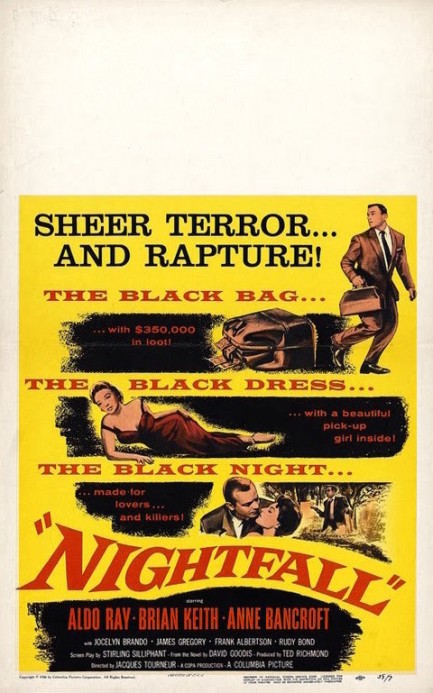











James Gregory was born in 1911 in The Bronx, New York. He is best known for his performance as Angela Lansbury’s husband in the chilling “The Manchurian Candidate” in 1962. A popular character actor, his other movies include “The AScarlet Hour” and “P.T. 109”. He died in 2002 at the age of 90.
“The Telegraph” obituary:
ames Gregory , the actor who has died aged 90, was one of those performers whose face was recognised by many, even if his name was known to only a few.
His best-known role was probably as the Right-wing Senator Iselin in John Frankenheimer’s The Manchurian Candidate (1962), about a brainwashed Korean War hero, but in a career spanning more than half a century Gregory appeared in some 35 films and 200 television series.
He was cast in television dramas such as Gunsmoke, Bonanza, Wagon Train, and Rawhide. If an American cop was required on the television screen, the chances were that he would be embodied by James Gregory. He had roles in Columbo, McCloud, Alfred Hitchcock Presents, and Hawaii Five-O.
From 1959 to 1961 he was Barney Ruditsky in The Lawless Years, a series based on the exploits of a real detective in New York City in the 1920s. He also played Inspector Frank Luger from 1975 to 1982 in Barney Miller, about a Jewish policeman portrayed by Hal Linden.
James Gregory was born in the Bronx on December 23 1911, and grew up in the New York suburb of La Rochelle. In his youth he demonstrated a talent for both acting and golf, and he might have opted for a career in either. But his first proper employment, after a series of jobs as golf caddy, waiter and clerk, was on Wall Street, where he worked as a runner after the crash of 1929; within five years he had been promoted to the post of private secretary to a stockbroker.
But Gregory simultaneously acted with local drama groups, and by the late 1930s he was acting professionally, performing with a travelling company in plays up and down the east coast of America. Then, in 1939, he made his debut on Broadway in a production of Key Largo.
During the Second World War Gregory served in the US Navy and Marine Corps in the Pacific, before returning to the stage; he appeared in a further 25 Broadway productions, including Arthur Miller’s Death of a Salesman, in which he played Biff. In the early 1950s Gregory moved into live television – it is said that at one stage he appeared in five different dramas over a period of only 10 days.
Apart from The Manchurian Candidate, his films included The Young Stranger (1957); Al Capone (1959); The Sons of Katie Elder (1965), in which Gregory played a murderer who kills the witnesses to his crimes; Beneath the Planet of the Apes (1969); and Shootout (1971).
James Gregory died on September 16. He is survived by his wife, Anne Gregory.
The above “Telegraph” obituary can also be accessed online here.
Anyone who knows me are aware that I am a bit of a movie buff. Over the past few years I have been collecting signed photographs of my favourite actors. Since I like movies so much there are many actors whose work I like.